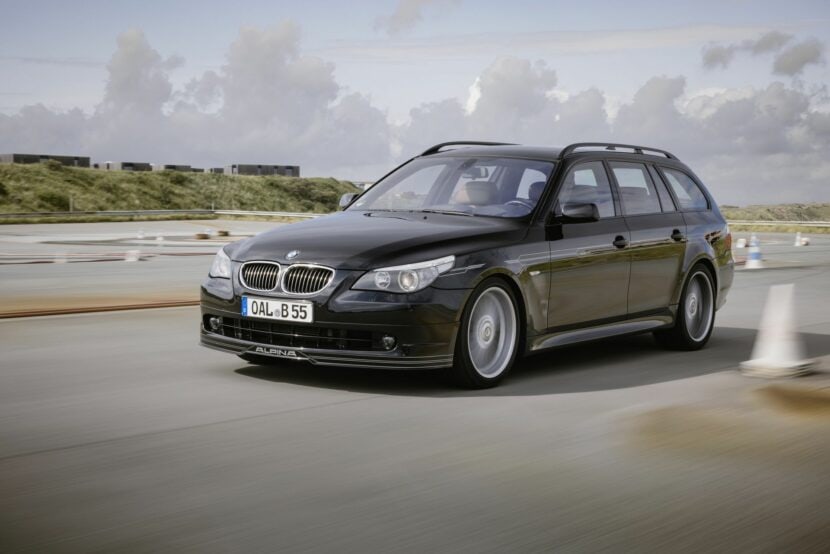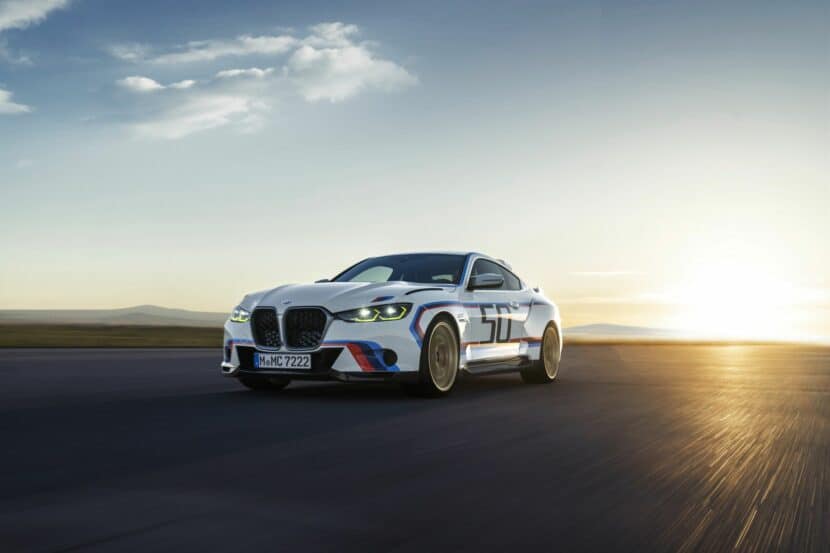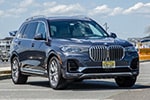The show or display law — or, in complete legalese, a specific amendment to Title 49, Part 591 of the Code of Federal Regulations, or 49 CFR Part 591 — is an interesting piece of legislature that allows for car collectors and enthusiasts to live the otherwise impossible dream of driving cars never federalized for the US right at home. It’s sometimes also referred to as “show and display,” The product of Bill Gates’s misadventure importing a then-illegal Porsche 959, the statute allows for historically or technologically significant cars to find a home in the US. It’s also the best way to get the rarest and most exclusive BMW models into the States. Secured a BMW Speedtop but need to know how to get it stateside? Allow us to explain some of the steps you need to follow.
Before Importing For Show or Display
Before you getting ready to import a vehicle — BMW or otherwise — for show or display in the US, you need to make sure you have permission. A current list of vehicles eligible for importation is always available on the NHTSA website. If the vehicle you’re importing is already listed, you can skip this step. Otherwise, you’ll have to first get permission from NHTSA.
Getting Permission From NHTSA
There are two ways to go about that. The first is to fill out a “Application for Determination That a Motor Vehicle is Eligible for Show or Display,” which allows you to get a vehicle added to the accepted list before you move forward with the purchase.
The other approach is to submit the “Application for Permission to Import a Motor Vehicle for Show or Display,” which is required before bringing the vehicle into the US. This route may appear slightly less involved on paper, but it still requires careful preparation. Applicants need to have logistics in place — such as storage, intended usage, and insurance — and must provide supporting documentation if the car has not already been approved for show or display.
In either case you’ll need photographs, production verification, and documentation supporting the vehicle’s “historical or technological significance.” That last part can be a doozy. Technological significance requires identification of “specific technology, engineering, and construction features of the vehicle that are advanced and of an unusual nature.” Historical significance, meanwhile, means establishing proof that the vehicle is first or last of its model, “one of a kind,” or owned by someone historically important. But that’s just the start of vehicle eligibility.
Five Questions and a List
When trying to figure out whether or not your vehicle is special enough for show or display, consider NHTSA’s five guidelines. Essentially, the organization says that if any one of these questions can be answered with a “yes,” the car will not be eligible for show or display. The five questions are:
- Was this vehicle make, model, and model year manufactured and sold in the US?
- Has a vehicle that’s the same make, model, and model year already been determined as eligible for show or display?
- Is this vehicle currently in production?
- Were more than 500 examples of this vehicle produced?
- Is this vehicle a kit car, replica, or special construction vehicle?
Now, this seems daunting at first. Especially for those of you looking to get a BMW M3 Touring, perhaps, or E92 M3 GTS into the States. But if you look at the cars already eligible on the list, there is hope. NHTSA defines “model” very narrowly. So, even though way more than 500 R34 Nissan GTRs were produced, for example, specific models like the Skyline R34 GT-R V-Spec/V-Spec II N1 are specific enough examples to merit individual eligibility.
However, consulting the list of vehicles determined not eligible, we also see cars like the E46 M3 CSL and, even rarer, the E30 M3 Sport Evo III. As you can see: lots of shades of gray. Cars like the E92 M3 GTS might make the cut (only 150 were made); however, the M3 CS Touring’s production numbers might make it ineligible.
On or Off? EPA Requirements and Road Usage

So, you’ve got your car’s approval figured out. The next step is handling the EPA if you plan to bring the car on public roads. If you’re not, things are way easier, as you can skip this step entirely. Even if the vehicle is approved for show or display, that only clears you through NHTSA.
For on-road use, the vehicle is still required to meet EPA restrictions if it’s less than 21 years old. If it’s younger than 21, the application requires you to provide the name of an Independent Commercial Importer. The ICI will need to verify the car is EPA compliant, which also means making modifications when needed. A list can be found on the EPA’s site.
Not sure if the vehicle you’re importing conforms? A vehicle emissions label is the best place to start. Not running the car’s original motor? Make sure the EPA and NHTSA know about it. Whether the swap happens to comply with EPA standards or otherwise.
Finally: Importing and Documentation
Actually importing the vehicle and clearing customs also requires its own separate forms. You’ll need — at least — the shipper’s or carrier’s bill of lading, a bill of sale, and foreign registration. EPA Form 3520-1 is of particular importance if your car is 21 years old or so. It’s where you’ll be able to declare your car “code E,” exempting it from EPA requirements.
You’ll also need Form HS-7 from the US Department of Transportation. Lastly, there could be tax implications including but not limited being on the hook for a Gas Guzzler Tax if your vehicle doesn’t manage at least 22.5 mpg combined city/highway.
If you’ve made it this far, you’re more or less in the clear. Show/display allows vehicles to cover 2,500 miles per year when approved for on-road use. The limited on-road use has similar restrictions surrounding some collector car insurance policies. It allows only for “the vehicle to be driven to and from nearby displays of similar automobiles.”
NHTSA also requires you keep fairly strict records, at least until the vehicle is 25 years old. That includes copies of all import/export paperwork, the title, insurance policy, and a mileage log. Technically, you also can’t sell or lease the vehicle without written permission from NHTSA either.
Go Import Your Dream BMW
There are many gray areas with show and display, but there’s a pretty big payout if you can keep the rules and regulations straight. Driving through the countryside (while complying with all local and federal safety and emissions laws, of course) in a vehicle that very few, if any other person has in the US definitely has real allure. Oddities and quirks of the law should be expected; after all, it seems to have become a law because wealthy people complained loud enough. One example: the Gordon Murray Automotive T.50 showed up on the eligible list before the car had even entered production.
What Would Be Your Favorite BMW To Import?
So, which BMWs are awesome candidates for show and display? The Skytop and Speedtop cars are perfect (we might see both in the U.S. from what we hear). We’re inclined to believe they’re EPA compliant, although that’s not a guarantee, which means the biggest hurdle is, you know, acquiring one. The 2023 3.0 CSL is also a fantastic candidate, with only 50 production units.
Maybe an E61 M5 Touring would make the cut, although its higher production numbers (around 1,000) may eliminate it from eligibility. Similar thoughts swirl around the myriad ALPINA models the US never got. Regardless, hopefully this helps make a little more sense of the show and display law.
Disclaimer: This article is for informational purposes only and does not constitute legal advice. Import regulations can change, and requirements may vary based on the specific vehicle. Always consult the official NHTSA and EPA websites or a licensed import professional before proceeding with a vehicle import under the Show or Display law.










































































